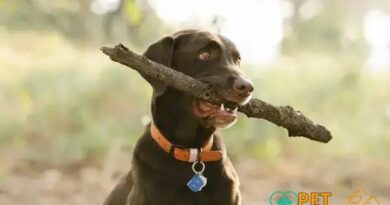O que é Observador
What is an Observer?
The term “Observer” in the context of dog behavior refers to an individual who closely watches and interprets the actions and reactions of dogs. This role is crucial for understanding canine communication, as dogs express their feelings and intentions through body language, vocalizations, and behavior. Observers can be dog owners, trainers, or enthusiasts who take the time to learn about the nuances of dog behavior.
The Importance of Being an Observer
Being an effective observer allows individuals to identify the needs and emotions of dogs. By paying attention to subtle cues, such as tail position, ear orientation, and facial expressions, observers can better respond to a dog’s needs. This understanding fosters a stronger bond between humans and dogs, enhancing training effectiveness and overall companionship.
Key Traits of a Good Observer
A good observer possesses several key traits, including patience, attentiveness, and empathy. Patience is essential when watching dogs, as their behaviors can be complex and require time to interpret accurately. Attentiveness ensures that no detail is overlooked, while empathy allows observers to connect with the emotional states of the dogs they are watching.
Training Your Observational Skills
Training to become a better observer involves practice and education. Engaging in activities such as dog training classes, workshops, and seminars can enhance observational skills. Additionally, spending time watching dogs interact in various environments, such as parks or dog shows, can provide valuable insights into canine behavior.
Common Observational Techniques
Several techniques can be employed to improve observational skills. One effective method is to take notes during dog interactions, documenting behaviors and contexts. Another technique is to use video recordings of dogs in different situations, allowing for analysis of behaviors that may be missed in real-time. These techniques help in developing a deeper understanding of canine communication.
Understanding Canine Body Language
Canine body language is a vital aspect of being an observer. Dogs communicate a wealth of information through their posture, movements, and facial expressions. For example, a wagging tail does not always indicate happiness; it can also signify excitement or anxiety. Learning to interpret these signals accurately is essential for any observer aiming to understand dogs better.
The Role of an Observer in Training
In dog training, the observer plays a pivotal role in assessing a dog’s progress and behavior. By observing how a dog responds to commands and social interactions, trainers can tailor their methods to suit the individual dog’s needs. This personalized approach not only enhances training outcomes but also ensures that the dog remains engaged and motivated.
Challenges Faced by Observers
Observers may encounter various challenges, such as misinterpreting a dog’s signals or being distracted by external factors. It is crucial to remain focused and avoid assumptions based on preconceived notions. Continuous learning and adaptation are necessary to overcome these challenges and improve observational accuracy.
The Impact of Environment on Observation
The environment plays a significant role in how dogs behave and how observers interpret those behaviors. Factors such as noise, the presence of other animals, and the overall atmosphere can influence a dog’s actions. Observers must consider these elements when analyzing behavior to gain a comprehensive understanding of the situation.
Becoming a Lifelong Observer
Being an observer is not just a skill but a lifelong journey. As dogs and their environments change, so too must the observer’s approach. Continuous education, practice, and a genuine love for dogs will ensure that one remains an effective observer throughout their life, enhancing the relationship with their canine companions.



